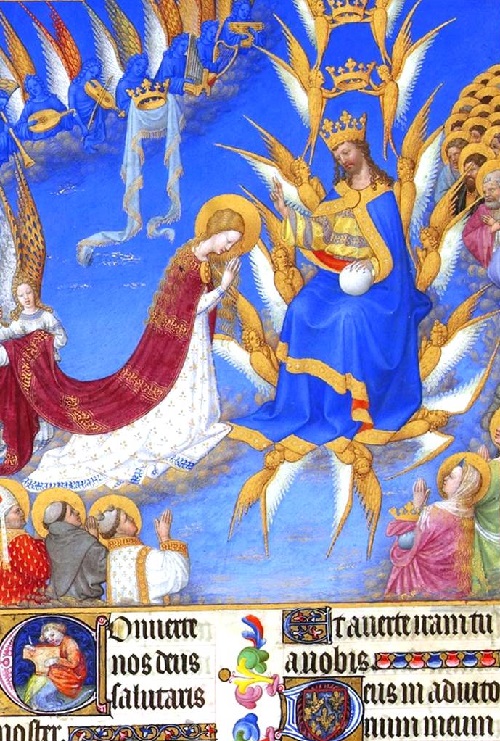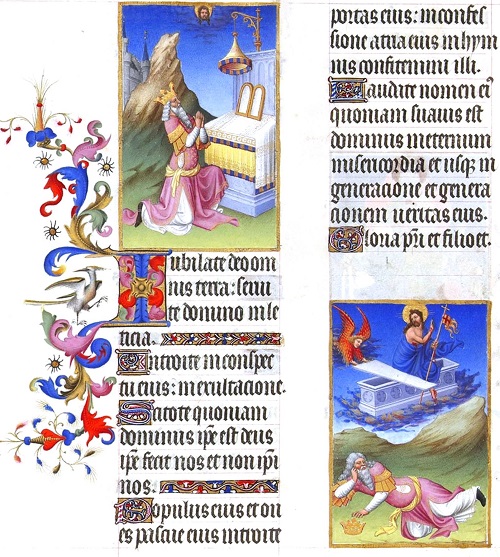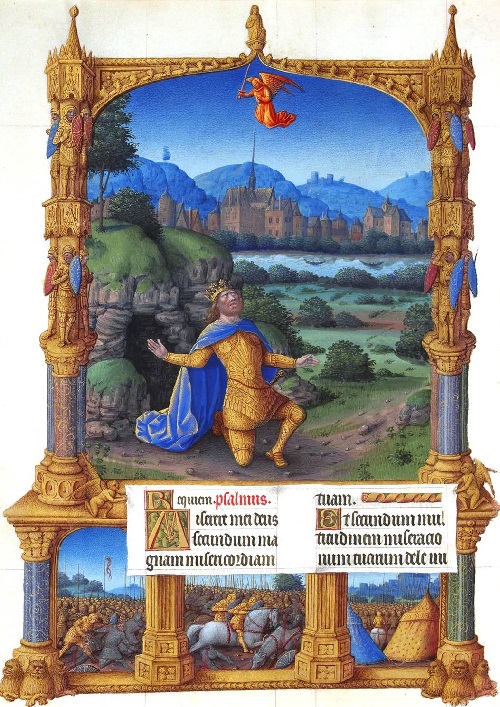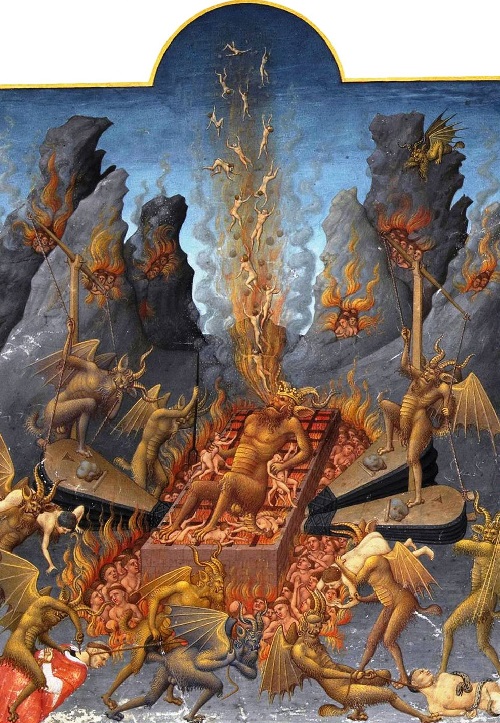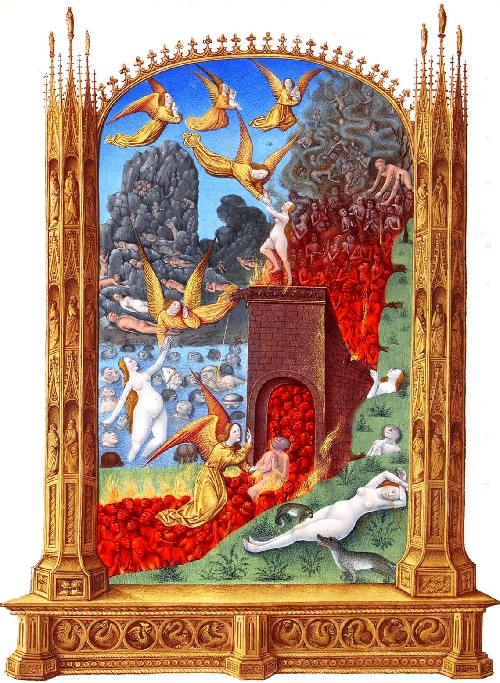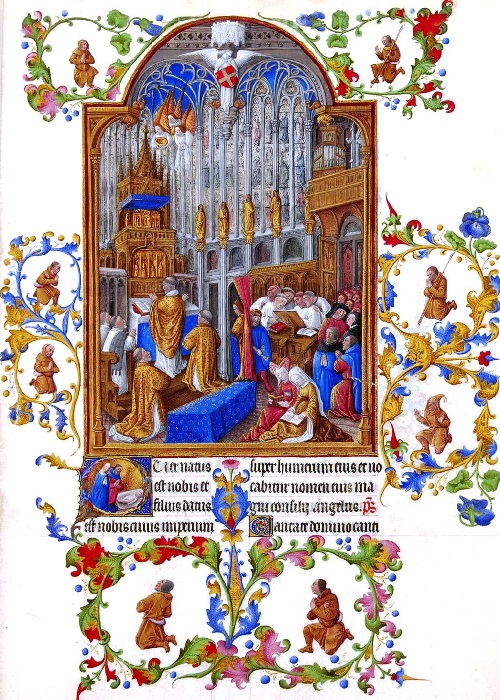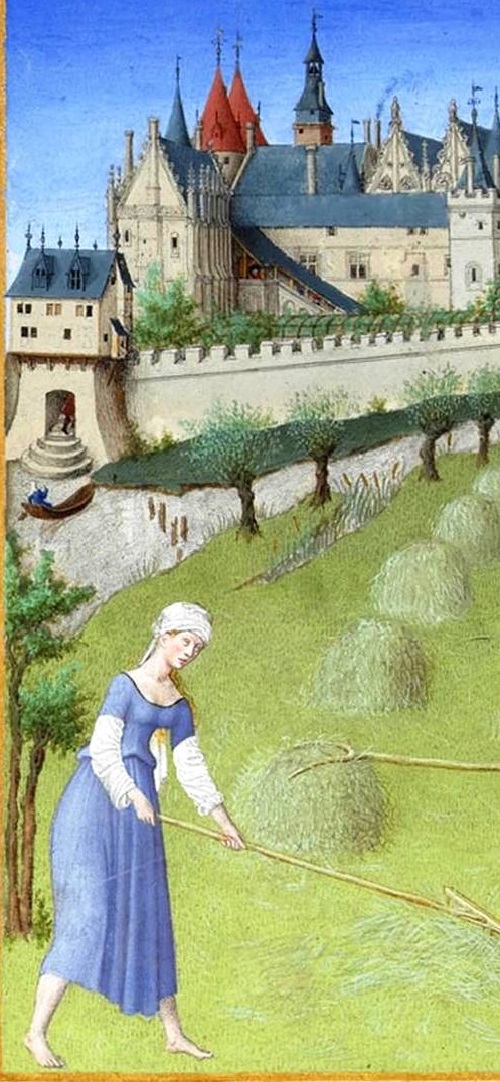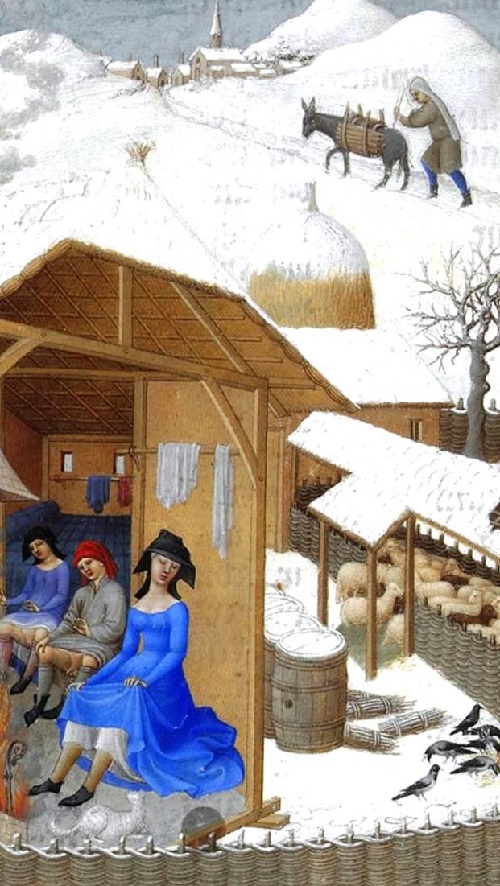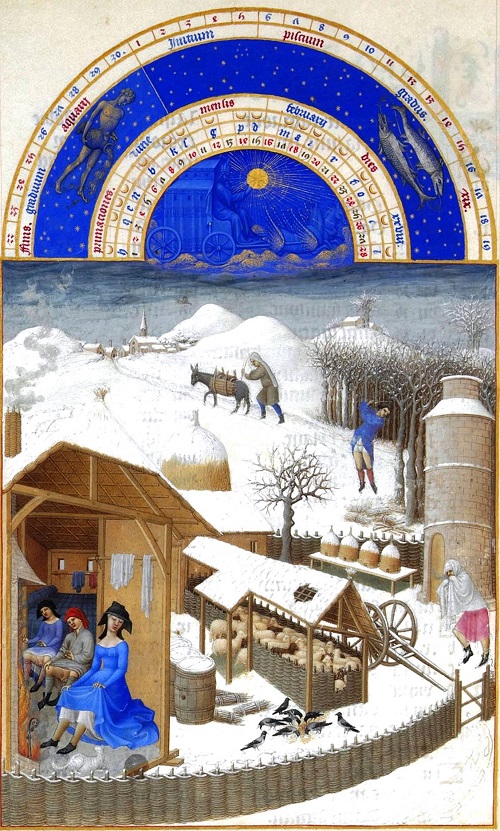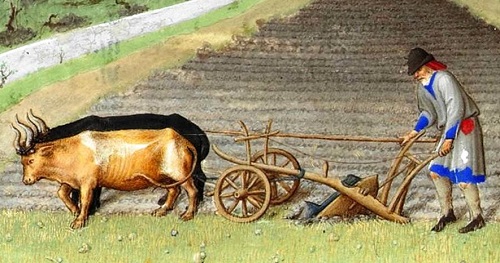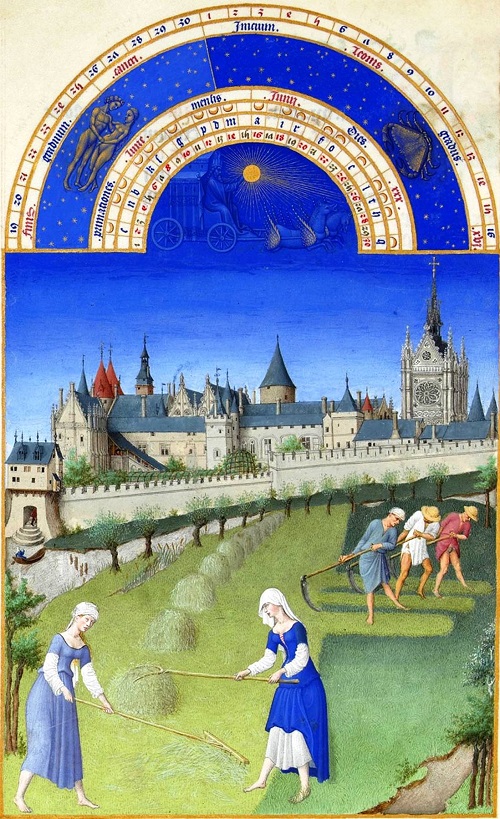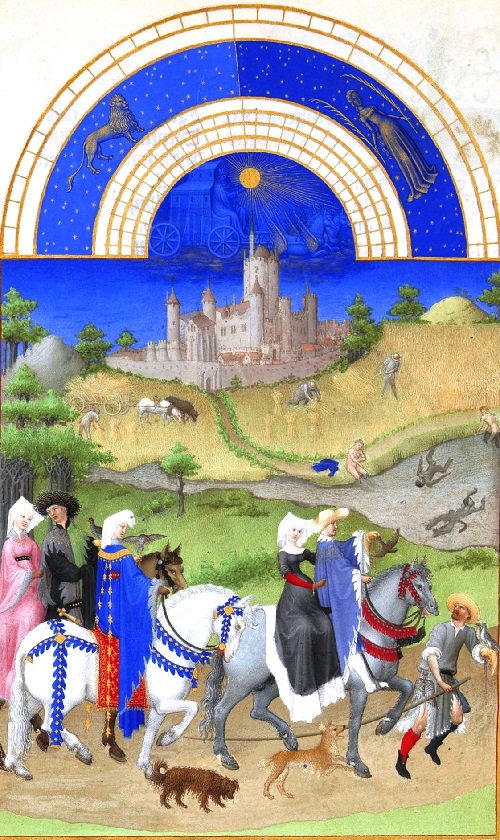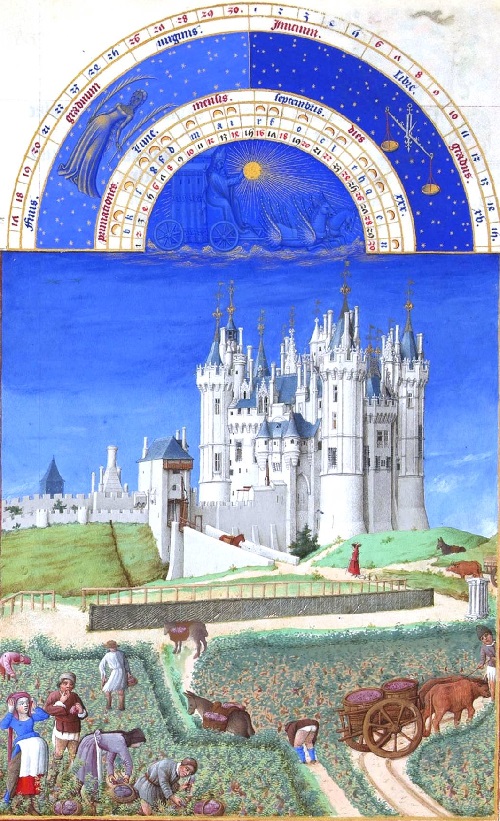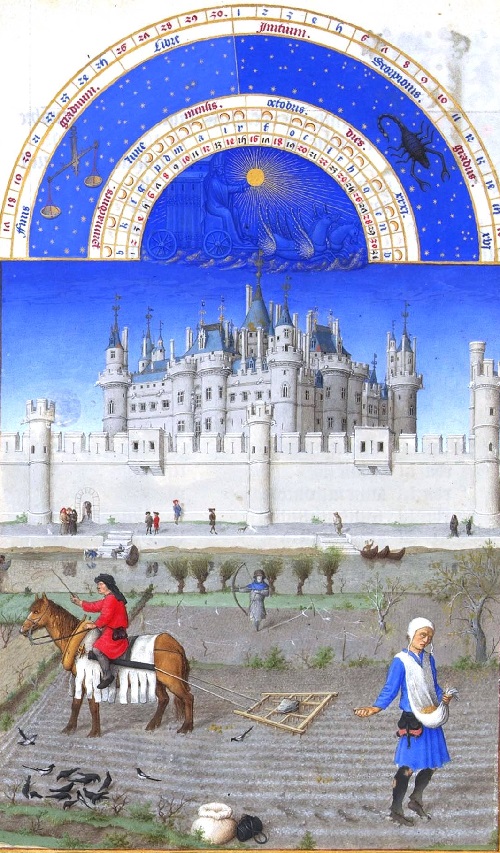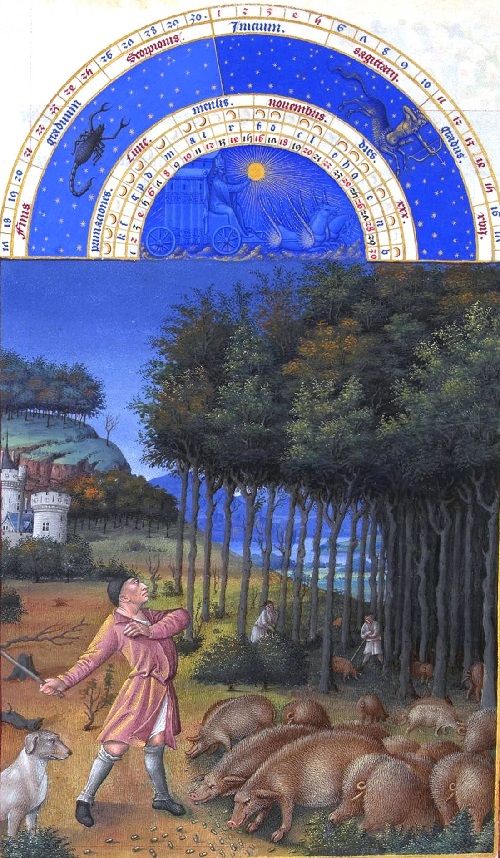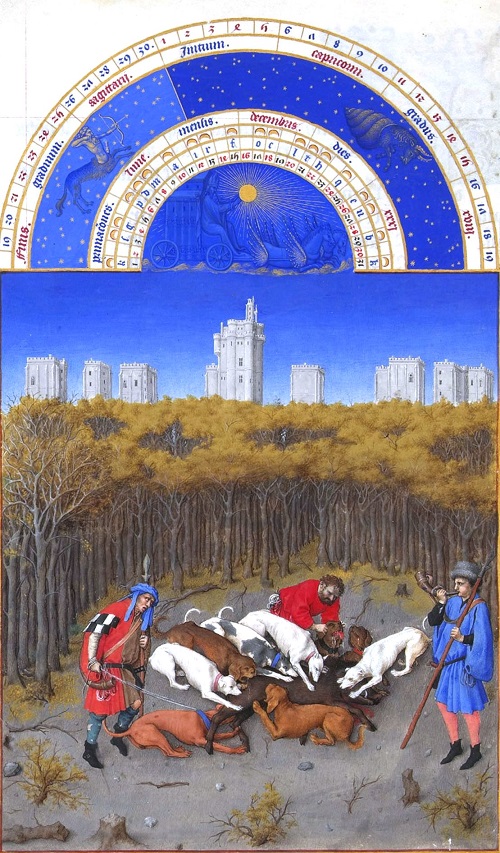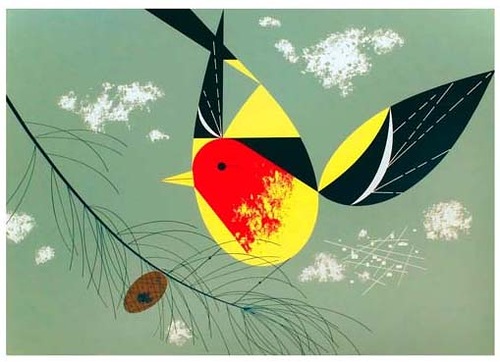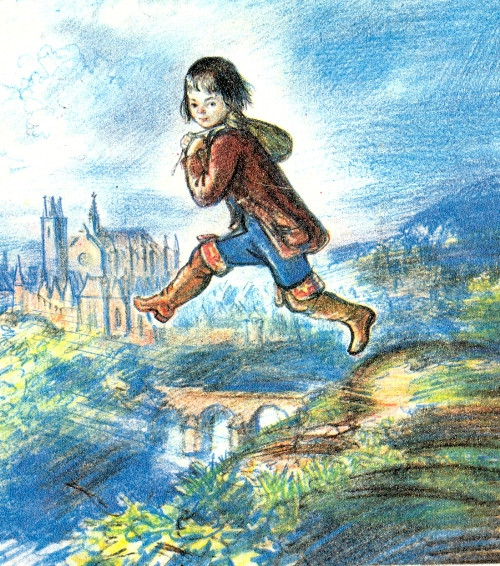Magnificent Book of Hours of Duc de Berry
Magnificent Book of Hours of Duc de Berry
The Limbourg brothers – Herman, Paul, and Johan were French painters, miniaturists, native of Nijmegen, the Northern Netherlands. They became famous thanks to the creation of “The Magnificent Book of Hours of Duc de Berry” (Très Riches Heures du Duc de Berry). The Book of Hours is one of the most beautiful books in the history of world culture. The manuscript was launched by Limburg brothers between 1409 to 1416. The text itself, uppercase letters, decorations and gilding, most likely made by other mastrers. The Limbourg brothers did not finish the book. According to some reports, they died in 1416 of the plague. Of 129 miniatures of the manuscript during the life of the Limburg brothers were performed 65.
The Book of Hours was commissioned by John, Duke of Berry. It consists of 206 sheets – 412 pages, size 29 × 21 cm. Despite its small size, these miniatures are one of the most significant monuments of the international Gothic.
As a rule, the Book of Hours, or Breviary was called manuscripts. They started with the calendar, usually accompanied by images of works and sports in different seasons and signs of the zodiac. Then followed the Liturgy, dedicated to a certain hour, which consisted of Bible readings, prayers.
Book of Hours was decorated with miniatures and was dressed in a gorgeous cover. As a rule, prayer book was given on the wedding day, the birth of the first-born, and many other celebrations. The book contained a series of practical information on astronomy, astrology, medicine, and other fields of knowledge, making it not only a welcome gift, but also a kind of home encyclopedia.
On the manuscript of the Book of Hours worked great number of people: “Master of Shadows” presumably Bartholomew van Eyck; Jean Colombo and many others. The very creation of the manuscript took about 80 years.
The main value of the Book of Hours are miniature year calendar in which the employment of people portrayed in different months. They are built on the same pattern: the top, in a semicircle, showing signs of the zodiac, corresponding to a particular month. Below – rectangular thumbnail with different scenes.
The Manuscript changed many owners in France, the Netherlands and Italy. In the first quarter of the XVI century The Book of Hours went to Flanders, where the copies were taken from the series “The Seasons.” In Italy, the prayer book was sold by Spinola family to Jean-Baptiste Serra, and then came to the Baron Felix Margherita. In 1855 it was purchased by the Duke of Omalsky, who later gave it as a gift to the French state. On its red binding of more recent origin is the arms of Genoese Spinola family and coats of arms of Serra.
Seasons:
The most famous image of the Book of Hours is a series of “Seasons” which consists of 12 miniatures depicting months. Book of Hours often contained a calendar, but the illustrations, “The Four Seasons” were innovative in terms of its direction to take in order the image composition, as well as artistic and technical performance.
Most miniatures contain images of castles of Duc de Berry and many details, attributes and conventional activities, suitable for a certain time of the year. Each illustration depicts celestial hemisphere, with the solar chariot, the signs of the zodiac and its degrees, as well as the number of days in a month and lettering of Julian lunar calendar.
January. This period is devoted to people born under the sign of Capricorn (top left) and under the sign of Aquarius (right). Mainly a period of gifts and presents, customs of 17-18 centuries, which are outdated and completely out of fashion. Jean de Berry presented at the bottom right, in a lovely blue dress. Duc de Berry presented in a fur hat and dressed in a blue coat with a raised collar on his neck, you can see the precious necklace. He no longer has a mustache and beard, which he wore during the period from 1385 to 1405 and 1406 to 1409. This picture features a feast organized in 1410-1416 years by Limbourg brothers. It was a great day for wishes and honoring the Duc de Berry and the prelate in a purple bright red coat (best cleric in the Catholic Church). On this auspicious day De Bury invited guests and their entourage, who were in it, and behind Duke hung a plaque with gold lettering: “come-come”. And it was a privilege of the people who came to the duke, who paid money for him and gave gifts to his lord and protector.
Three of the Limburg brothers are also shown in the picture: Paul in a red cap, bent over his ears, his body partly hidden behind the body of the second brother, and the third is given above. In the picture, there are also the dogs of Duke: two of them are on the table. Nearby is a golden ship, with the emblem of a bear and a swan. Below – a citizen feeds the greyhound.
February. This miniature was created between 1438-1442 by the unknown artist of the court of Charles 7. It was dedicated to the month of February, namely the harsh life of the peasants in the winter. In the foreground we can see a woman and two young men, warmed by fire. The door is opened and so you can see its internal environment and the people there. A woman raises her long dress to better warm up, while a man and a woman sitting in front are without panties.
In the center and right Sheepfold, four beehive, mansarada, wood, barrels, bundles of wood, and a cart. In the background a haystack and three characters: one blows into a fist and is preparing to return home, while another chops wood. The third leads a donkey to the village church. Great importance presents this snow, against which we can see all the clarity of a long, hard winter day. Footprints in the snow, heavy step of peasant couple, vapour from the mouths of people – all this shows the difficulties of peasant life, and fully reflects the creativity of Bruegel.
March. The painting depicts the first work of the peasants in the year: the time of sowing and plowing. This story could have been conceived by Paul de Limbourg, and played by an unknown painter somewhere in 1440, in the background we see a beautiful castle located in the region of Poitou-Charentes, one of the residences of the Duke of Berry. It should be noted that the presence of the towers on the canvas highlights their powerful and their symbolic meaning.
Front of the castle we see a shepherd with a dog who looks after a flock of sheep; below: workers gather grapes left – grapes already assembled, located near the small house. At the bottom of the picture we see a farmer who leans to sow the seed of grapes. Finally, in the foreground is a farmer near the two bulls that pull the plow. The farmer with the plow and the plowman dressed in a white robe. In his right hand he holds a sharp stick, to customize the bulls.
As for the grape harvest in the Middle Ages, French vineyards were much greater than in our time, and the wines of Poitou, Saintonge, or they (whites) were highly appreciated by the Flemish and English.
April. The arrival of spring symbolizes faith in the new life. The grass is green, and in the foreground you can see the newly formed pair of lovers who exchanged rings in the presence of their loved ones. Castle Dourdan is the second possession of the Duke De Berry. This picture painted by the Limbourg brothers between 1410-1416 shows a spring decor of renaissance, the scene of wedding of Charles Duke of Orleans and the lovely Bonne of Armagnac, granddaughter of Jean de Berry.
The bride and groom exchange rings, accompanied by two witnesses who endows them with flowers. Spring – that’s the beauty, joy, pleasure – all this has shown at the celebration of the event: holiday knights and beautiful maidens.
May. This scene represented by the Limbourg brothers illuminates holiday on May 1st, which is the day of love. At midnight, the whole town came to the forest. And the city became the so-called “temple of happiness.” And early in the morning the townspeople, “armed” with flowers, tree branches, gladioli installed in every home maypole: These trees were on the window sills, balconies, and the owners put them in the ground to celebrate this great day.
Meanwhile, musicians and honked the horn, played the flute, and the participants of the event wore crowns and necklaces of leaves. Women dressed in long green dresses. Horse riders Duke of Clermont, Jean de Bourbon, and the lady – his third wife, Marie de Berry, daughter of Duke of Berry. The presence of logos on caparisoned horses, gold rings, the castle Ile de la Cité in Paris – all to plunge into the atmosphere of the festival.
June. In the foreground depicted a scene of haymaking, which we can observe in the village. The only thing that distinguishes modern humans from the peasants of the time – the clothes. One woman raking hay, the other puts it with a fork. On the right – three men mow the grass. In the center of the picture – rakes with a pitchfork. The author gave the characters dignity portraying them in their work, for their occupation.
July. This picture was painted in June of 1440. It presents agricultural work. In the fields, surrounded by water and trees, reapers cut grain with a sickle. But the grain itself is not already bound in bundles. In the fields grow cornflowers and poppies. In the foreground on the right – a woman in a blue dress, with her – a man on his knees, cutting a ram. Reapers also use the rod for cutting grain.
Reaper dressed in a hat with a wide brim, which protects him from the sun, in the white shirt. We see that one mower is running barefoot, in contrast to the other mower. The painting depicts swans, willow, cane. Famous castle in Poitiers (built in the late 14th century), the possession of the Duke de Berry, until his death in 1416.
August scene was painted by the Limbourg brothers between 1410-1416. It illustrates the passion of the nobles for hunting on small and large birds of prey, such as, a hawk, food which is a crane, swan, waterfowl, duck. Due to its Agility hawk was a symbol for the nobility of good training, education, courage and bravery. In those days, the hawk is presented as a gift as a token of friendship or love.
September. In the foreground – the grape harvest: a woman in a white apron seems pregnant, young men gather grapes; the other two resting and one of them tries to raisins; another with a basket in his hands. In the background can be seen the castle of Saumur, built by Louis 2 The presence of the castle is due to the important role of Madame Yolande (mother-in-law of Charles 7, the wife of Louis 2) took place in the early days of Charles 7. The architecture of the castle can be compared with the dream of the poet … Towers represent protection, power.
October. This picture is like the image of the month of June. Both are painted with a brush of the same artist, depicted on the left bank of the Seine, not far from the hotel Nestle. But in contrast to the pattern in June where the characters look to the east, here the attention is directed at the Louvre, restored by Charles 5. On the banks of the River Seine stroll people dressed in the dark, no different from each other clothes that are typical of the 15th century.
November. The painting is a rural landscape: gathering acorns. Herd of pigs grazing in an oak forest. In the foreground one of swineherds knocks acorns with a stick for the pigs could eat. Huge dog watches the animals. Pigs found a place in the “most expensive time”, despite the negative connotations that carry these animals. They are an integral part of rural life and food for humans.
December. This picture is reminiscent of creativity of Giovannino de Grassi, a masterpiece by an unknown artist, who lived in 1438-1442. Behind the thick and beautiful forest with mighty trees in the distance you can see the main tower of Vincent forests, which were of great value in the time of Charles 5. In the 14th century, the tower began to assume the appearance of the castle: the height of the walls and the shape of the tower symbolized the power of the grand master of the tower, talked about his infinite riches. This castle of Charles 5, where he often liked to stay, symbolizes physical and moral strength of the owner.
Magnificent Book of Hours of Duc de Berry
source bibliotekar.ru
